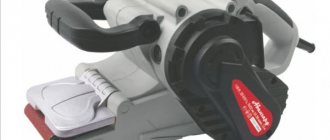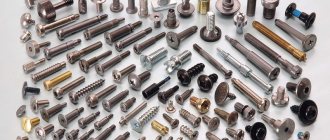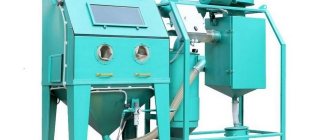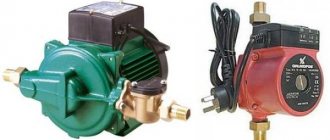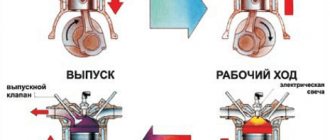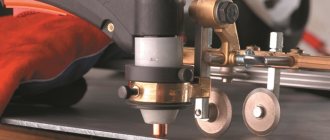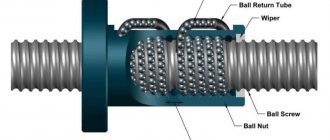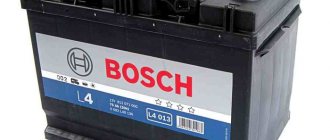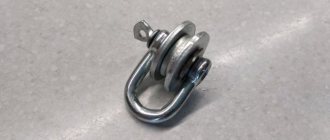The manufacturer of dust collection and gas cleaning equipment "PZGO" offers for consideration methods and equipment for such processes as air purification after sandblasting and shot blasting, collection and ventilation of emery and other abrasive dust.
For more than 30 years now, using our own technologies and patents, on our own full-cycle lines, we have been creating highly efficient, compact and affordable industrial dust cleaning systems, which today operate with dignity at more than 200 industrial enterprises in Russia and abroad, showing an average efficiency of ≈ 99%.
or request a consultation on dust collectors
Is ventilation really necessary?
Important!
When performing cleaning or grinding work using a sandblasting machine, installing a minimum ventilation system is required.
During operation of a shot blasting machine using sand, a large amount of dust is generated. It consists of small particles that have broken off both from the surface being cleaned (rust, old paint, particles of the top layer of the surface of the product), and due to the breaking of the abrasive material itself during impact.
Quickly filling the room, dust settles on equipment and is inhaled by personnel. In addition, due to low visibility, the quality and speed of work is reduced. Lack of ventilation in the sandblasting chamber is also dangerous for the equipment. The resulting dust settles on the floor and mixes with the used abrasive material. This overloads the machine and causes it to wear out quickly.
Generation of abrasive dust in sandblasting and shot blasting areas
The processes of shot blasting and sandblasting in inhabited and uninhabited chambers of pressure and injection type - (colloquially “shot blasting” and “sandblasting”, respectively) - are widely used in modern industry.
In general, such operations can be defined as high-speed “bombardment” of surfaces with solid abrasive mechanical particles of varying dispersion.
Quick review of dust collection units from PZGO
Steel sand, corundum powder, cooper slag, garnet, glass beads, metal shot, silicon carbide and other high-strength natural and synthetic materials (in the form of coarse sand, chips or balls) can be used as an abrasive.
Exhaust aspiration and filter ventilation systems for collecting abrasives and removing dust from sandblasting or shot blasting are in demand in the following areas of production:
- Cleaning metal structures and elements from rust, scale, oils, fats, petroleum products, old paint and other coatings;
- Cleaning tanks and containers, including removal of bacterial and fungal contaminants;
- Removal of contaminants on workpieces before galvanic and gas-thermal operations;
- Renewal of the coating of pipelines, road and railway bridges, overpasses, crossings (external work);
- Renovation of facades of buildings and structures (external work);
- Sandblasting of metal, alloys, glass and other decorative surfaces, adding aesthetic value to household items.
Among other things, sand and shot blasting processes contribute to surface microhardening of metals and alloys due to surface deformation and phase change - the so-called. shot peening.
Within the framework of this page, it is worth mentioning the operations of polishing and grinding. Filtration of dust from emery, woven and non-woven fibers, as well as auxiliary compositions (for example, GOI paste) is an extremely important aspiration and ventilation procedure, since the fine particulate material spreads well in the industrial atmosphere, moving away from the dust source to impressive distances.
Air cleaning system for sandblasting chamber based on bag dust collector
Inhalation of such dusty air environments quickly leads to a deterioration in the health of workers - silicosis, pneumoconiosis, asthmatic conditions and other disorders of the respiratory and cardiovascular systems develop.
See our completed project: shot blasting machine aspiration.
Some values of the dispersion of dust particles depending on the material being processed and the abrasive composition
| Type of processing ( P – sandblasting, D – shot blasting) | Dispersity of exhaust dust |
| (D) Stainless steel (centrifugation) | 200 microns. or less |
| (D) Ceramics | 100 microns. or less |
| (D) Steel | 50 microns. or less |
| (D) Stone | 100 microns. or less |
| (P) Metal | 200 microns. or less |
When choosing an industrial abrasive filter, it is also worth considering the tendency of the exhaust emissions to sinter/carburize. Thus, abrasive dusts most prone to sticking after shot blasting are stainless steel, carbon steels and stone/mineral rocks.
Principle of operation
There are two ways to filter the air in the sandblasting chamber:
- A fan is a simple and cheap way to organize a hood. Its performance must be calculated in such a way that the total volume of air in the chamber changes in no more than 2 minutes. But this method has quite a few disadvantages: dirty air will escape into the street, an additional cleaning filter will be required, and under heavy loads the fan quickly breaks down.
- A cyclone with a self-cleaning filter system is an expensive but effective way to clean an uninhabited sandblasting chamber. The design consists of a powerful dust-proof fan and cartridge filters equipped with a shaking system. The principle of operation is to suck air from the chamber and supply it to the filters. At the exit, it is cleaned of dust and small abrasive particles. The equipment is connected to the power supply network.
The cost of installing ventilation with self-cleaning filters is 15–20 times more expensive than a fan, but it can eliminate problems with environmentalists for a long time and provide comfortable working conditions.
How to choose the right type of sandblasting chamber design?
The last thing that will help you decide which camera you need is understanding what will be processed in your booth. If you plan to clean car rims, you only need a pressure chamber, otherwise cleaning will be very, very slow. If you plan to occasionally carry out household cleaning of parts, an ejector chamber is quite suitable for you. If you have a large volume of work, you will need a pressure chamber, also with automatic abrasive recovery.
What filters are used in ventilation?
To purify the air, filters made of special materials (polyester, cellulose, cellulose-polyester) are used. The main task of such cartridges is to trap dust on their walls. Filters are chosen depending on the materials they work with.
For regular cleaning of air and cartridges, a special automatic filter cleaning system is used. The use of such ventilation significantly extends the life of the entire installation.
Important!
The self-cleaning system uses a pulse of compressed air to shake the filter and knock off adhering dust and dirt. Accordingly, this type of cleaning system requires a source of compressed air to operate.
The principle of operation of a homemade sandblasting chamber
The principle of operation is quite simple: compressed air from an air compressor is mixed with an abrasive, supplied to the surface through a gun or a special nozzle, due to which the surface is intensively cleaned of various types of contaminants: rust, scale, paint, etc. Spent abrasive with elements of contaminants (chilled paint , scale, etc.) fall through the grated floor. Next, if you have a simple chamber without automatic recovery, then you need to remove and sift the used abrasive, separate the debris, and put it back into the hopper. During operation, dust generated will be removed using ventilation.
DIY hood
To make a hood with your own hands, you will need:
- electric motor with a power of 0.3-0.75 kW;
- volute for air removal or propeller with blades;
- filter.
The sandblasting chamber is equipped with a compressed air supply hose, volute or blades connected to the engine. The snail’s “nose” is mounted inside the chamber and sealed tightly. The blades, using an electric motor, will create the necessary vacuum to suck in polluted air.
A cleaning filter made of polyester, cellulose or a combination is installed at the outlet. With proper installation and complete sealing of the structure, correct operation and durability of the system can be guaranteed.
The chamber of the sandblasting machine must have a ventilation system. For small volumes, you can use a homemade fan-based hood. For production scales, a ventilation system with self-cleaning filters is ideal.
Types of cameras
The sandblasting chamber can be local or volumetric (inhabited). Local chambers are designed for processing small products. Habitable chambers have a large internal volume, where you can place, for example, the body of a car. When working, the operator is inside such a chamber, so he will need a set of certain protective accessories - a helmet, glasses, gloves for sandblasting, etc. However, it is also possible to remotely control the process of such cleaning (more on this later).
In local chambers, sandblasting is performed by creating reduced air pressure inside the working space. Under conditions of such artificial rarefaction, due to the pressure difference, a sand jet is ejected from the nozzle with the required speed and pressure. By moving the nozzle tip along a certain trajectory, the operator processes the surface of the workpiece. Naturally, in such ejection chambers it is easy to clean small products.
Advantages of local cameras:
- Compactness.
- Low financial and material costs for self-production.
- Increased safety for workers and the environment.
- Reduced energy costs since low suction compressor power is required.
- Convenience and ease of sand regeneration for reuse.
Inhabited cameras solve larger problems. Their volume must be very accurately calculated in order not only to freely position the object being cleaned inside and provide places for the worker to move, but also to ensure the necessary air exchange. Residential type sandblasting chambers operate on the principle of pumping a working mixture, and are therefore called pressure chambers. Their performance is many times higher than that of ejector-type cameras. Accordingly, energy costs also increase (a much more powerful compressor is required), sand consumption and sand losses increase. Another problem is the disposal of sand contaminated with cleaning products, which, in turn, requires the presence of effective filter systems.
Scope of sandblasting machines
You should start with the area where sandblasting is used. The most famous application of this processing method is for cleaning metal during body repair or when painting car rims. Devices for such processing have high pressure, with the help of which a sand jet removes the remains of old paint, soil, rust or scale from the metal surface.
Sandblasted metal lasts much longer after painting, largely due to the fact that such cleaning is better than other methods of removing metal coating. Small grains of sand cut into the surface being treated at high speed, thereby knocking down even those traces of corrosion that are located in small pores or cracks, where they are difficult to reach with traditional tools.
In addition to the quality of cleaning from old coating and traces of corrosion, sandblasting leaves behind a smoother surface. There are no scratches that occur after using brush cleaning, or using sandpaper with large abrasive particles. This makes it much easier to apply the first layer of primer and improves the quality of its adhesion to the metal.
In addition to body repair, sandblasting is widely used in other areas of human activity. This is how large ships, parts and products are cleaned in factories. In addition to metal, this processing method is also applicable to other types of materials, for example, for cleaning wood, brick or concrete products.
Sandblasting machines are used to create specific effects on wood or glass. Wooden products after processing can acquire all kinds of patterns. Sandblasting is used to frost glass, which is used for decorative purposes, for example, for engraving in the form of different patterns. Some sandblasting machines can be used to drill holes in glass, which can be round or other shapes.
